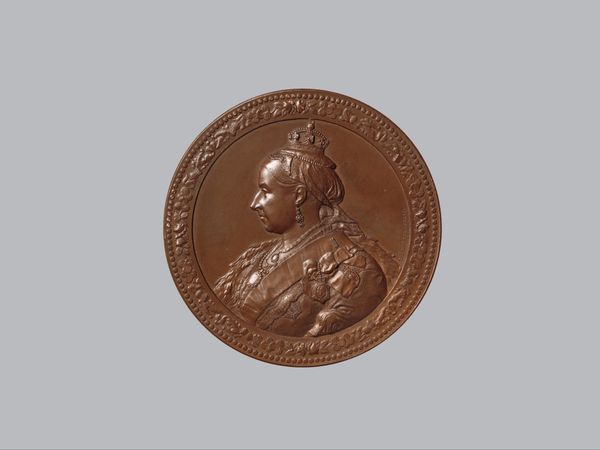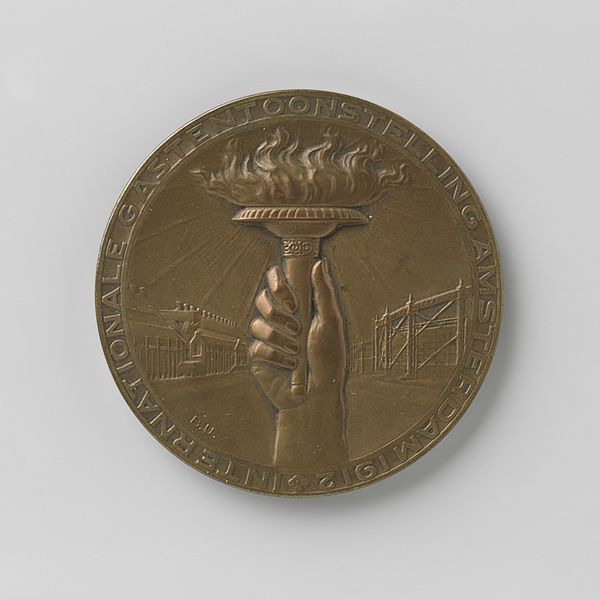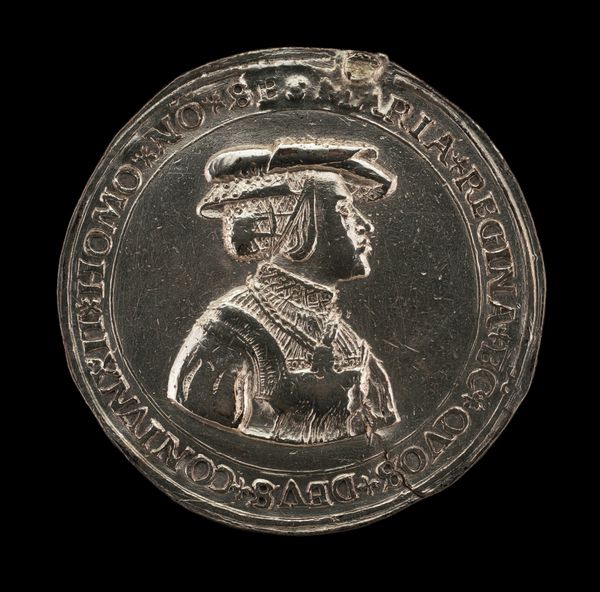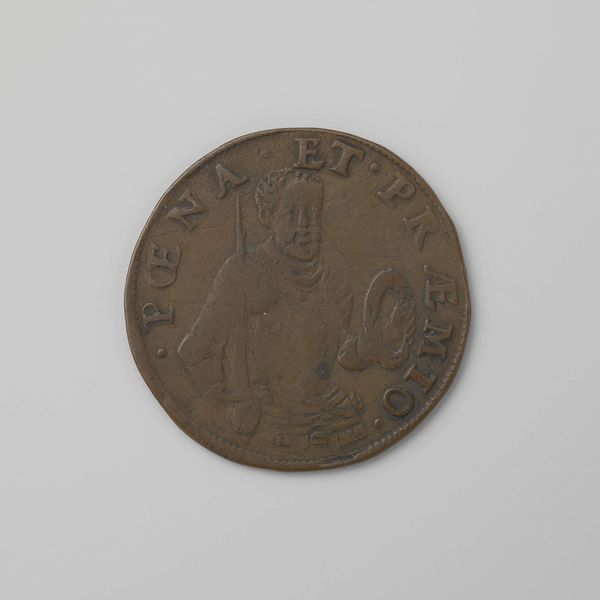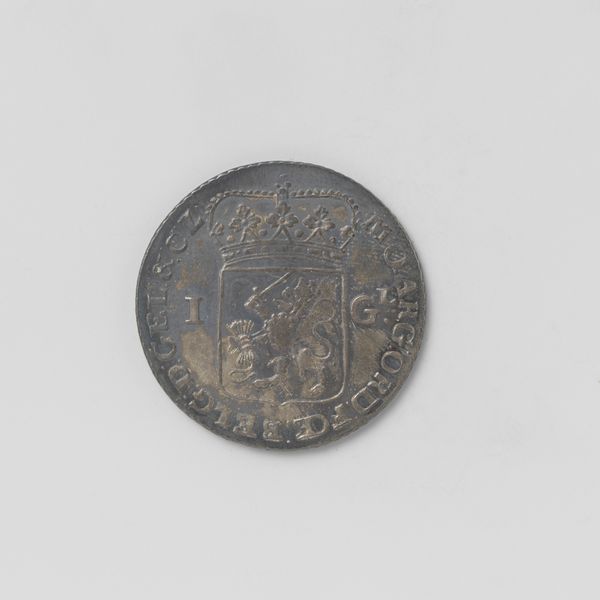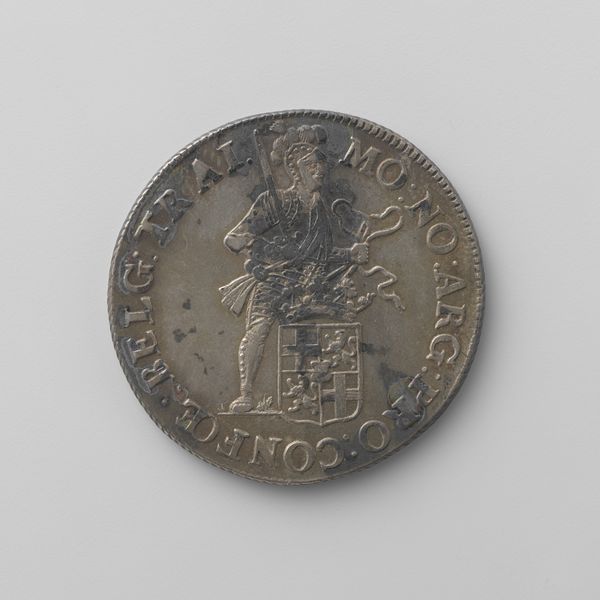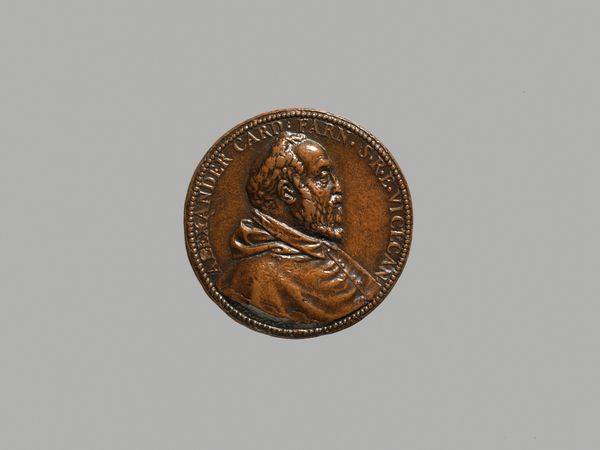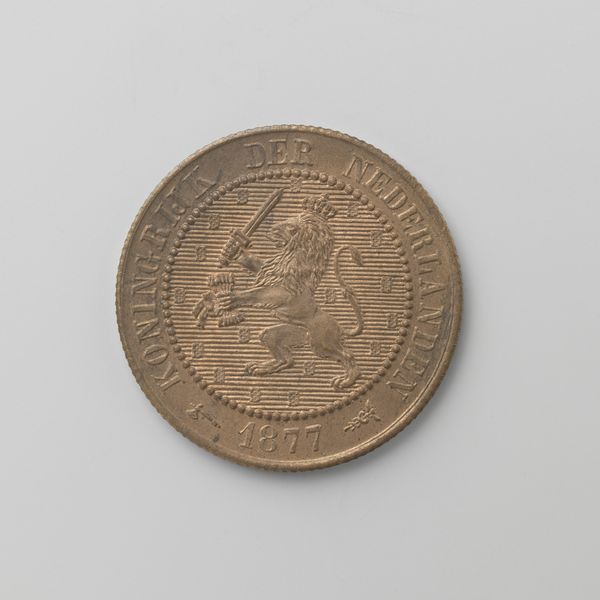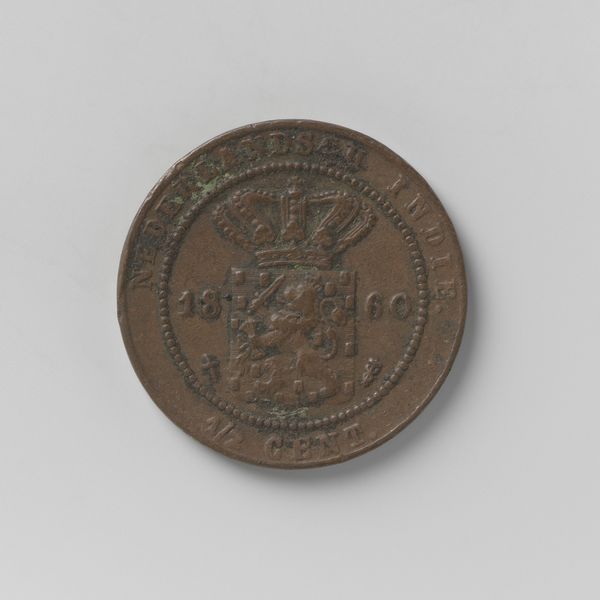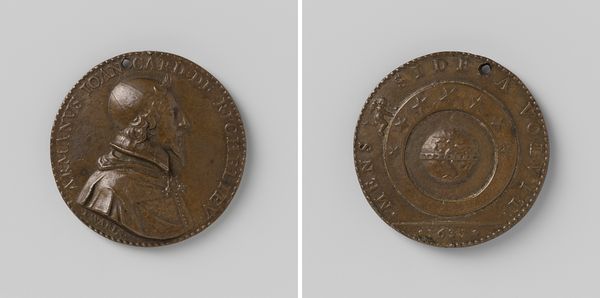
Frederick III (1413-1493), Holy Roman Emperor (1452) 1469
0:00
0:00
carving, bronze, sculpture
#
portrait
#
medal
#
carving
#
sculpture
#
bronze
#
11_renaissance
#
sculpture
#
decorative-art
#
italian-renaissance
Dimensions: 56.5 mm
Copyright: Public Domain
Curator: The work before us is a bronze medal crafted around 1469 by Bertoldo di Giovanni, a student of Donatello. It portrays Frederick III, the Holy Roman Emperor. Editor: It's immediately striking how somber the profile appears. There's a weighty stillness conveyed, despite the small scale of the piece. The circular format really concentrates the focus. Curator: The medal, though small, was a potent symbol. Consider the inscriptions surrounding Frederick's profile. They're deliberate choices intended to convey enduring power and legitimacy. Editor: Exactly. The use of Latin contributes to that sense of permanence. Semiotically, the very medium - bronze - evokes ideas of strength, and longevity, consciously associating the emperor with those attributes. Curator: These portrait medals arose from a revival of interest in classical antiquity and were inspired by ancient Roman coins. Notice how Frederick is shown in profile, just as emperors of old were depicted. The aim was to link him to that lineage of power. Editor: It is all very classical in form, while something about his face projects that sense of a looming figure and authority which is interesting given the size of the artifact. Curator: Power wasn’t only demonstrated by fierce battle scenes; sometimes, control is in projecting steadfast dignity. The clothing choices, his headwear, the subtle modeling of the bronze... everything converges to communicate that imperial identity. Editor: And despite the object being a 'multiple,' rather than unique, the refined carving grants an air of exceptional value and thus the dignity worthy of royalty, elevating Frederick from simply a man to the embodiment of an idea. Curator: Indeed, that idea being the Holy Roman Empire, eternal and divinely ordained, made material in this portable, enduring bronze object. The power of objects to shape cultural memory should not be underestimated. Editor: Precisely. Seeing this artwork in its historical, political, and cultural framework really enriches our encounter with this sculpture today.
Comments
No comments
Be the first to comment and join the conversation on the ultimate creative platform.
